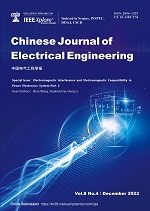
Guest Editors:Shuo Wang (University of Florida, USA)
Stephan Frei (TU Dortmund University, Germany)
Hong Li (Beijing Jiaotong University, China)
With the development of high and new technologies such as 5G, big data, high-speed railway, renewable energy generation, flexible AC/DC transmission and electric vehicles, the power conversion system as the key support function is also developing rapidly in the direction of high frequency, high efficiency, high power and high-power density. The electromagnetic environment of the power and energy conversion system becomes more and more complex, which puts forward more stringent requirements for the electromagnetic compatibility design of the system, especially with the technological breakthrough and commercial use of wide band gap semiconductor power devices represented by SiC and GaN. Electromagnetic interference (EMI) and electromagnetic compatibility (EMC) have become the important challenges to ensure the functionality, safety, reliability and performance of the system. Therefore, it is of great significance to study the EMI and EMC theory and key technologies of power electronics system.
At present, EMI prediction and EMC technology of power electronics system have been widely studied. However, different industries have different technical characteristics and needs. Further, there are new challenges for satisfying EMC standard of power electronics system under the new situations such as the use of wide-band gap power switches, higher switching frequency, higher integration, higher voltage and higher power. Thus, it is necessary to carry out in-depth scientific research on the basic theory and key technologies of EMI and EMC of power electronics system.
|
|||||||